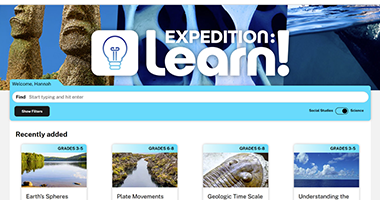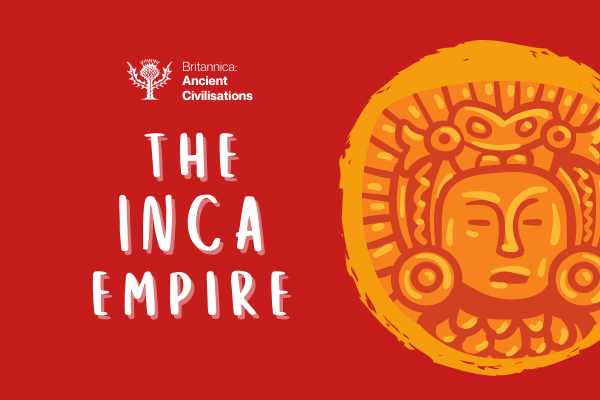The Inca were a powerful Indian people of western South America. Their empire stretched along the Pacific coast and the Andes Mountains. Before it was conquered by the Spanish in the 1530s, the Inca civilisation acquired great wealth and gained control of a population of about 12 million people.
The “Britannica: Ancient Civilisations” series features bite-sized activity sets to help students explore in-depth, cultures, industries and empires from the ancient world. See other lessons in this series.
Primary School
Use this Britannica School (Australia) Primary Level Resource Pack ↗ to help primary students explore the Inca Empire, its culture, people and geography.
Teacher Tip:
Schools in New Zealand and Asia can also access this resource pack at:
Britannica School (New Zealand) Primary level resource pack ↗
Britannica School (Asia) Elementary level resource pack ↗
Activity
-
- The Incas held strong religious beliefs. The most important god in their religious system was Inti, God of the Sun. Explore the Inca’s beliefs and practices related to worshipping their gods and goddesses, complete the Incan Gods and Goddesses Research Chart.
- The Inca Empire was known as an area where you could easily find gold, silver, and copper. These materials were used to create works of art, such as metal sculptures and masks of gods or goddesses. Design a mask that demonstrates the characteristics of Incan art. Use the materials in the Britannica School resource pack or from other sources to inspire your design.
- The Incan civilisation was also well known for its architecture. Religious temples were very intricate and decorative, gold was often used. Fortresses were built using large stone blocks that fit tightly together. Machu Picchu is one of the most well-known fortresses ever created.
Imagine you are an explorer visiting Machu Picchu, write a letter to be sent back home describing what you see there. Include illustrations, drawings or diagrams of the ruins and their mountain landscape.
Middle School
Use this Britannica School (Australia) Middle Level Resource Pack ↗ to complete the following activities for more advanced students. It contains articles and multimedia texts.
Teacher Tip:
Schools in New Zealand and Asia can also access this resource pack at:
Britannica School (New Zealand) Middle level resource pack ↗
Britannica School (Asia) Middle level resource pack ↗
Activity
-
- Cuzco or Cusco was the capital city of the Incan empire, the invading Spanish gave this name to the capital city. Create a profile for this ancient city.
- Incas did not invent a writing system, instead they created a quipu. A quipu was a device the Incan people used to record information. Make you own quipu of 5 strands where each strand represents a number. For example, the first strand could represent your birth year. Present your quipu to the class and explain the importance of each number.
- The Incas held strong religious beliefs. The most important god in their religious system was Inti, God of the Sun. Explore the Inca’s beliefs and practices related to worshipping their gods and goddesses, complete the Incan Gods and Goddesses Research Chart.
These activities and resources have been created using content from Britannica School, the go-to site for safe, comprehensive student research. Contact your librarian to find out if your institution already has access. Find out more about Britannica School or set up your own free trial.
More Educator Resources
Sign up with your email for more free resources from Britannica.

